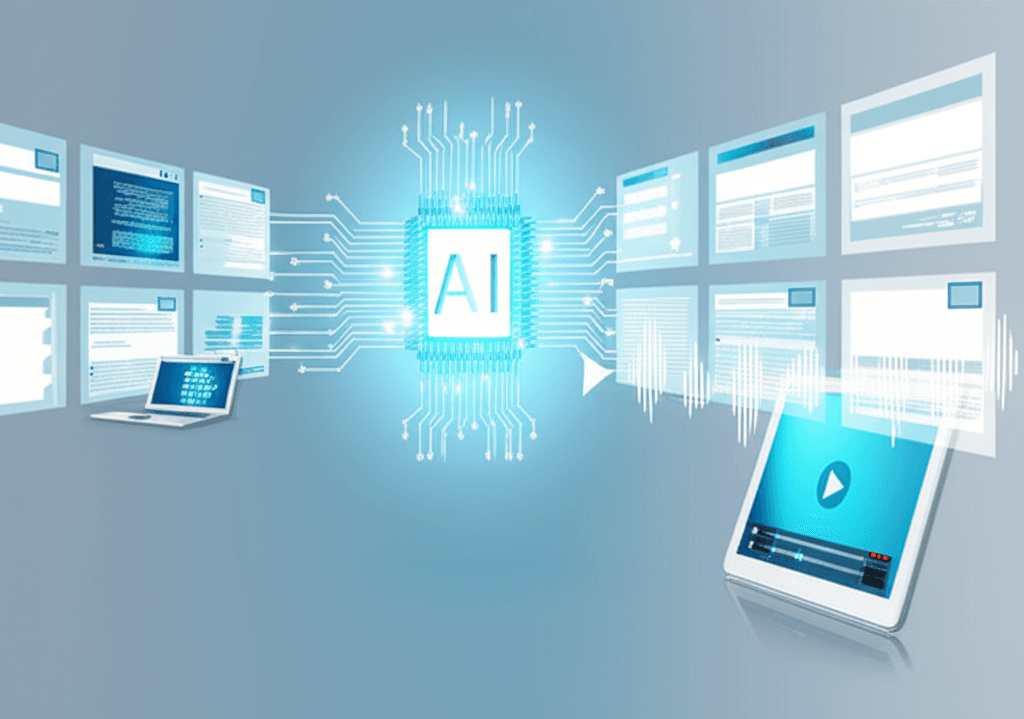Google's NotebookLM AI Automatically Generates Narrated Videos from Documents
NotebookLM's AI now transforms your documents into narrated video presentations, making complex information accessible for enhanced learning and collaboration.
July 29, 2025

Google's AI-powered research and note-taking assistant, NotebookLM, has introduced a significant new capability called "Video Overviews," which automatically transforms users' documents into narrated video presentations. This feature builds upon the existing "Audio Overviews" that create podcast-style summaries, and represents a major step forward in making complex information more accessible and engaging for a wider range of users, particularly visual learners.[1][2][3] The initial rollout of Video Overviews is in English, with plans to support more languages in the future.[4][5] The videos are generated as a sequence of narrated slides, incorporating visuals, diagrams, quotes, and data directly from the source materials provided by the user.[1][4][6] This development is part of a broader trend of integrating generative AI into content creation, aiming to streamline workflows and enhance comprehension for both individuals and collaborative teams.[7][8]
The core functionality of Video Overviews lies in its ability to synthesize dense text and data into a structured, visual narrative.[2][3] Users can upload various documents, including PDFs, Google Docs, and even web pages, into a NotebookLM project.[9][10] From there, they can prompt the AI to create a video, specifying the target audience, learning goals, and key topics to focus on.[4][5] For instance, a user could ask for a simplified explanation of a technical diagram for a non-expert audience or a detailed breakdown of a specific process for a team of specialists.[2][4] The AI then generates a video with a natural-sounding voiceover and aesthetically pleasing visuals, including highlighting key terms and creating timelines to illustrate historical context.[1] Early previews have shown the potential for this feature to be highly beneficial for students studying for exams, researchers needing to quickly grasp the essence of multiple papers, and professionals preparing for meetings.[1][11] The videos are not meant to be highly animated or entertainment-focused, but rather factual and slide-based to support structured learning.[6]
This new feature is part of a series of enhancements to NotebookLM aimed at making it a more comprehensive and collaborative tool.[12] Alongside Video Overviews, Google has redesigned the "Studio Panel," the interface where users manage generated content like mind maps and audio summaries.[12][4] This redesign allows for a more organized workflow and the ability to create and store multiple outputs of the same type within a single notebook.[4] For example, a user could generate audio summaries in different languages for a global team or create multiple video overviews focusing on different chapters of a textbook.[12][4] Furthermore, NotebookLM now offers public notebook sharing, allowing users to create collaborative research spaces where team members can interact with the material without altering the original files.[12] The platform also includes featured notebooks from experts and publications, providing a starting point for research on various topics.[13] These updates, combined with the recent launch of mobile apps for iOS and Android, are transforming NotebookLM from a personal research assistant into a powerful hub for collaborative thinking and knowledge sharing.[12][11]
The introduction of AI-driven video generation in a tool like NotebookLM has significant implications for the broader AI industry and the future of content creation. It represents a shift towards multi-modal AI assistants that can cater to diverse learning styles and information consumption preferences.[2] While AI-powered text and image generation have become increasingly common, the automated creation of coherent and contextually accurate video summaries from user-provided documents is a notable advancement.[7][14] This technology has the potential to dramatically improve efficiency in various fields by automating the time-consuming process of creating educational and informational videos.[8][15] However, it also raises questions about the future of content creation roles and the potential for over-reliance on AI, which could impact creativity and critical thinking.[16][15] As with any powerful AI tool, the accuracy and potential for "hallucinations" or misinterpretations in the generated content remain a consideration, highlighting the importance of using such tools as an aid rather than a replacement for human understanding and expertise.[17] The development of Video Overviews, along with similar technologies like Google's Veo, signals a clear trajectory towards more sophisticated and integrated AI tools that will continue to shape how we interact with and create information.[18][19]
Sources
[2]
[5]
[7]
[8]
[9]
[10]
[11]
[12]
[13]
[14]
[15]
[17]
[18]
[19]